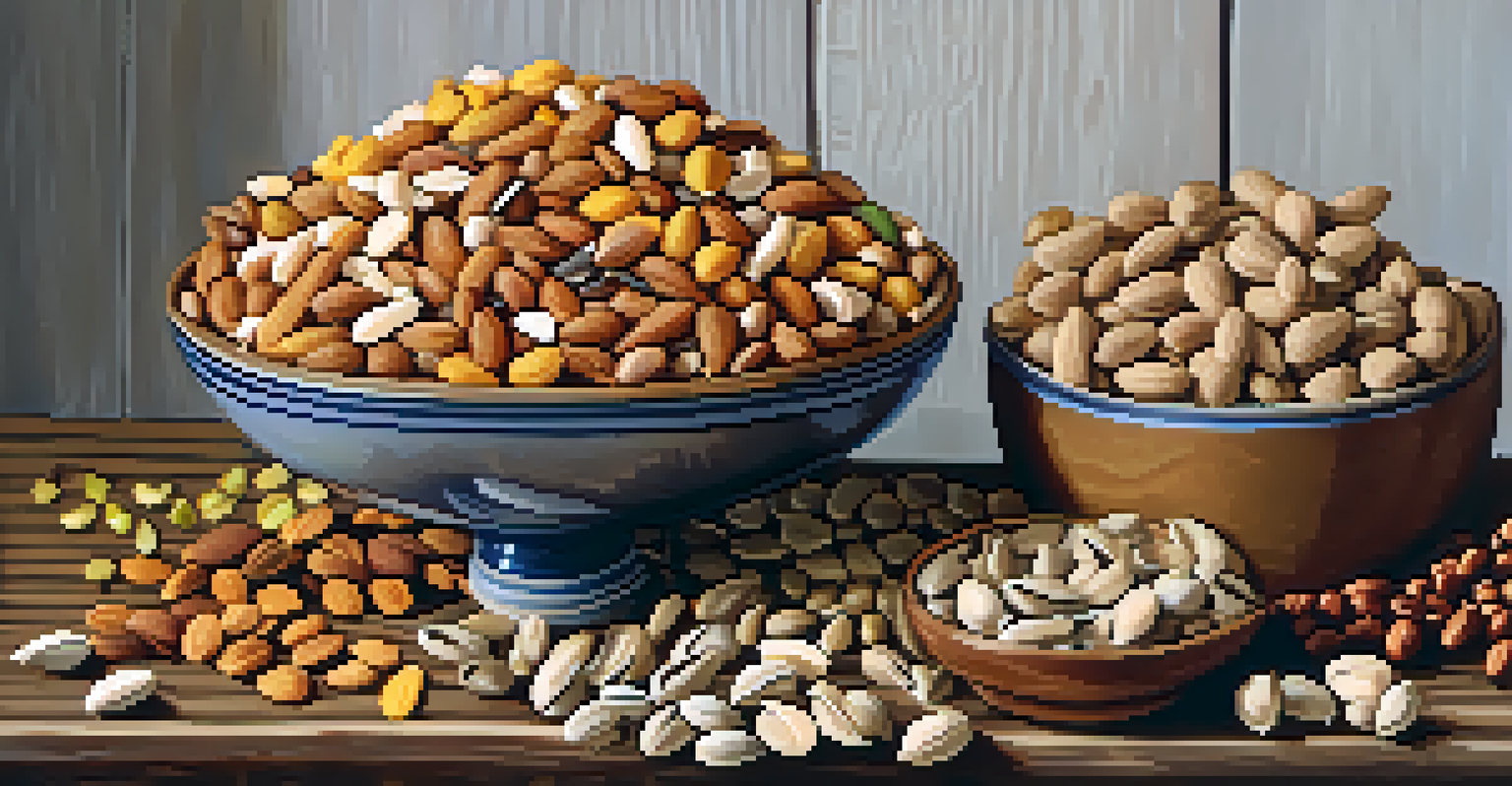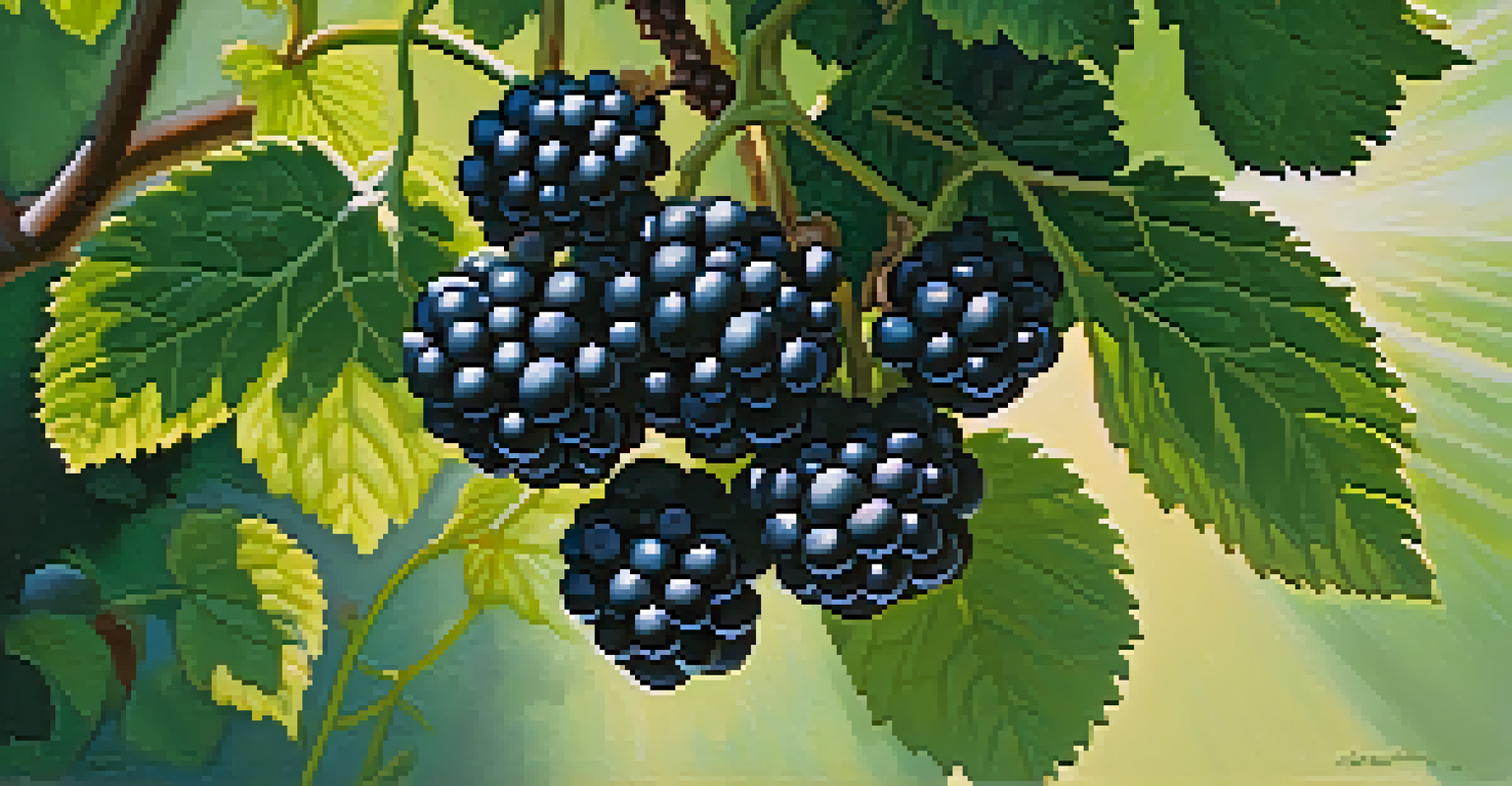Fruit Morphology: Types and Their Ecological Significance

What is Fruit Morphology and Why It Matters
Fruit morphology refers to the study of the physical structure and form of fruits, which plays a crucial role in plant reproduction. Understanding how fruits develop helps us appreciate their diverse shapes, sizes, and colors. This knowledge is not just academic; it has practical implications in agriculture, horticulture, and conservation.
The diversity of life is not a mere luxury; it is a necessity for the survival of our planet.
Different fruits have evolved unique morphologies to adapt to their environments and ensure successful seed dispersal. For example, fleshy fruits attract animals that help in seed dispersal, while dry fruits may rely on wind or water. By studying these variations, we can gain insights into the evolutionary strategies plants use to thrive in different habitats.
Moreover, fruit morphology can influence ecological relationships within ecosystems. The structure of a fruit can determine which animals consume it and, consequently, which environments the seeds are dispersed into. This interconnectedness highlights the importance of understanding fruit morphology in ecological studies.
Classification of Fruits: Simple, Aggregate, and Multiple
Fruits can be broadly classified into three main categories: simple, aggregate, and multiple fruits. Simple fruits develop from a single ovary and can be further divided into fleshy and dry fruits. For instance, apples are fleshy simple fruits, while nuts are examples of dry simple fruits.

Aggregate fruits, on the other hand, form from a single flower with multiple ovaries. A classic example is the blackberry, where each small segment is a separate fruit, all clustered together. This unique structure showcases how different flowering strategies can lead to varied fruit forms.
Understanding Fruit Morphology
Fruit morphology studies the structure and form of fruits, which is vital for plant reproduction and ecological relationships.
Lastly, multiple fruits arise from the fusion of several flowers, such as pineapples. This fascinating category emphasizes the diversity of fruit morphology and demonstrates how plants can adapt their reproductive strategies to maximize success in their environments.
Fleshy Fruits: Characteristics and Examples
Fleshy fruits are characterized by their soft, juicy tissue, which often attracts animals for seed dispersal. These fruits typically contain seeds surrounded by a nutritious pericarp, making them appealing to herbivores. Common examples include peaches, strawberries, and tomatoes, each designed to entice animals with their vibrant colors and sweet flavors.
Plants are the original architects of the earth's ecosystems, and understanding them helps us to nurture the planet.
The ecological significance of fleshy fruits cannot be understated. They play a pivotal role in the life cycles of many plants by facilitating seed dispersal far from the parent plant. This strategy reduces competition for resources and allows plants to colonize new areas, ensuring the survival of their species.
Moreover, the relationship between fleshy fruits and their consumers is a prime example of co-evolution. As plants evolve to produce more enticing fruits, animals adapt their feeding habits, further promoting effective seed dispersal. This intricate dance of evolution highlights how interconnected life forms can shape their environment.
Dry Fruits: Varieties and Ecological Roles
Dry fruits are generally characterized by their hard, non-fleshy outer layer, which protects the seeds within until they are ready to germinate. These fruits can be either dehiscent, meaning they split open to release seeds, or indehiscent, where the seeds remain inside until external factors encourage dispersal. Examples include peas and sunflowers, each illustrating unique strategies for seed release.
The ecological roles of dry fruits are significant as well. They often rely on environmental factors like wind or water for dispersal, which can enable them to spread over vast distances. This ability allows plants to occupy various ecological niches and adapt to diverse habitats.
Types of Fruits Explained
Fruits are categorized into simple, aggregate, and multiple types, each showcasing unique structures and reproductive strategies.
Furthermore, the hard shells of dry fruits often provide protection against herbivores, increasing the chances of seed survival. This evolutionary trait showcases how plants have adapted their reproductive strategies to counteract predation and ensure their lineage continues.
Aggregate Fruits: Structure and Importance
Aggregate fruits develop from a single flower with multiple ovaries, resulting in a collection of smaller fruitlets. This unique structure can be seen in fruits like raspberries and blackberries, where each tiny segment is a separate fruit. The aggregation of these fruitlets is not just for aesthetics; it serves a functional purpose in reproduction and seed dispersal.
The ecological importance of aggregate fruits lies in their ability to attract various pollinators and seed dispersers. The diverse flavors and textures of these fruits can entice different animals, ensuring that seeds are dispersed across various landscapes. This strategy increases the likelihood of successful germination in suitable environments.
Additionally, the formation of aggregate fruits can offer advantages in terms of resource allocation. By clustering multiple fruitlets together, plants can maximize the use of nutrients and energy, enhancing their reproductive success. This efficiency showcases the intricate balance plants maintain in their life cycles.
Multiple Fruits: Unique Characteristics and Benefits
Multiple fruits form from the fusion of several flowers, creating a single fruiting structure. A well-known example is the pineapple, which develops from a cluster of individual flowers. This fascinating formation highlights how complex interactions among flowers can lead to unique fruit structures.
The ecological benefits of multiple fruits are significant, as they can provide abundant food sources for various animals. The large size and nutrient-rich composition of these fruits often attract a wide range of herbivores, ensuring effective seed dispersal. Additionally, this can enhance the chances of seeds germinating in favorable conditions.
Impact of Climate Change on Fruits
Climate change affects fruit morphology and distribution, posing challenges for plant reproduction and the animals that depend on them.
Moreover, multiple fruits can create microhabitats for various organisms, promoting biodiversity. As these fruits decay, they enrich the soil, providing nutrients for other plants and creating a thriving ecosystem. This interconnectedness underscores the importance of multiple fruits in maintaining ecological balance.
Fruit Morphology and Climate Change: A Growing Concern
As climate change continues to impact ecosystems, fruit morphology may also be affected. Changes in temperature, precipitation patterns, and other environmental factors can influence the development and distribution of fruits. This shift could have significant implications for plant reproduction and the animals that rely on these fruits for food.
For instance, certain fruit-bearing plants may struggle to adapt to rapidly changing climates, leading to decreased fruit production and availability. This reduction can ripple through the food chain, affecting herbivores and the predators that rely on them. Understanding these dynamics is crucial for conservation efforts.

Moreover, monitoring changes in fruit morphology can provide valuable insights into the health of ecosystems. By studying how fruit types and structures evolve in response to climate change, researchers can better predict the future of biodiversity and inform strategies to preserve vulnerable species.